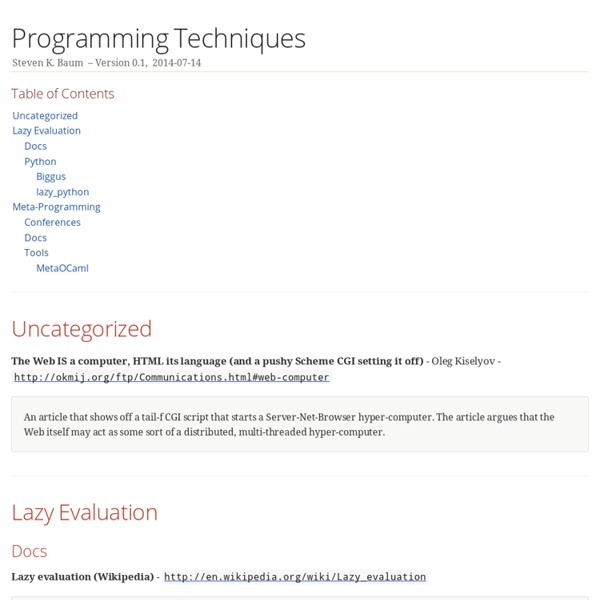Programming Texts/Tutorials
Biggus Biggus is a pure-Python library for handling very large (i.e. too large for system memory) n-dimensional arrays. It has two main components: Representation, lazy indexing, and conversion to persistent files and NumPy arrays; andLazy calculation. At the core of Biggus is the Array which provides a simple, consistent, NumPy-esque interface to n-dimensional data which avoids reading data until explicitly requested by user code. Commonly these Array objects are created by wrapping "concrete" data sources such as HDF5 variables, netCDF4 variables, or even just NumPy arrays. Once created, Array objects can be concatenated and stacked to form new Array objects, which can themselves be concatenated and stacked as required. In addition, all Array objects can be indexed to extract subsets. User code may request any Array object be saved to a "concrete" data form (e.g.
Learn Linux, 101: Hard disk layout
Overview In this article, learn to design a disk partitioning layout for a Linux system. Learn to: Allocate filesystems and swap space to separate partitions or disksTailor the design to the intended use of the systemEnsure the system can be bootedUnderstand the basic features of Logical Volume Manager (LVM) This article helps you prepare for Objective 102.1 in Topic 102 of the Linux Professional Institute's Junior Level Administration (LPIC-1) exam 101. Note: This article deals mostly with planning the layout. Note: This article includes material for the LPI Exam 101: Objective Changes as of July 2, 2012. Prerequisites To get the most from the articles in this series, you should have a basic knowledge of Linux and a working Linux system on which you can practice the commands covered in this article. Back to top Filesystem overview A Linux filesystem contains files that are arranged on a disk or other block storage device in directories. Table 1. Partitions Listing 1. Listing 2. Listing 3.
Related:
Related:



